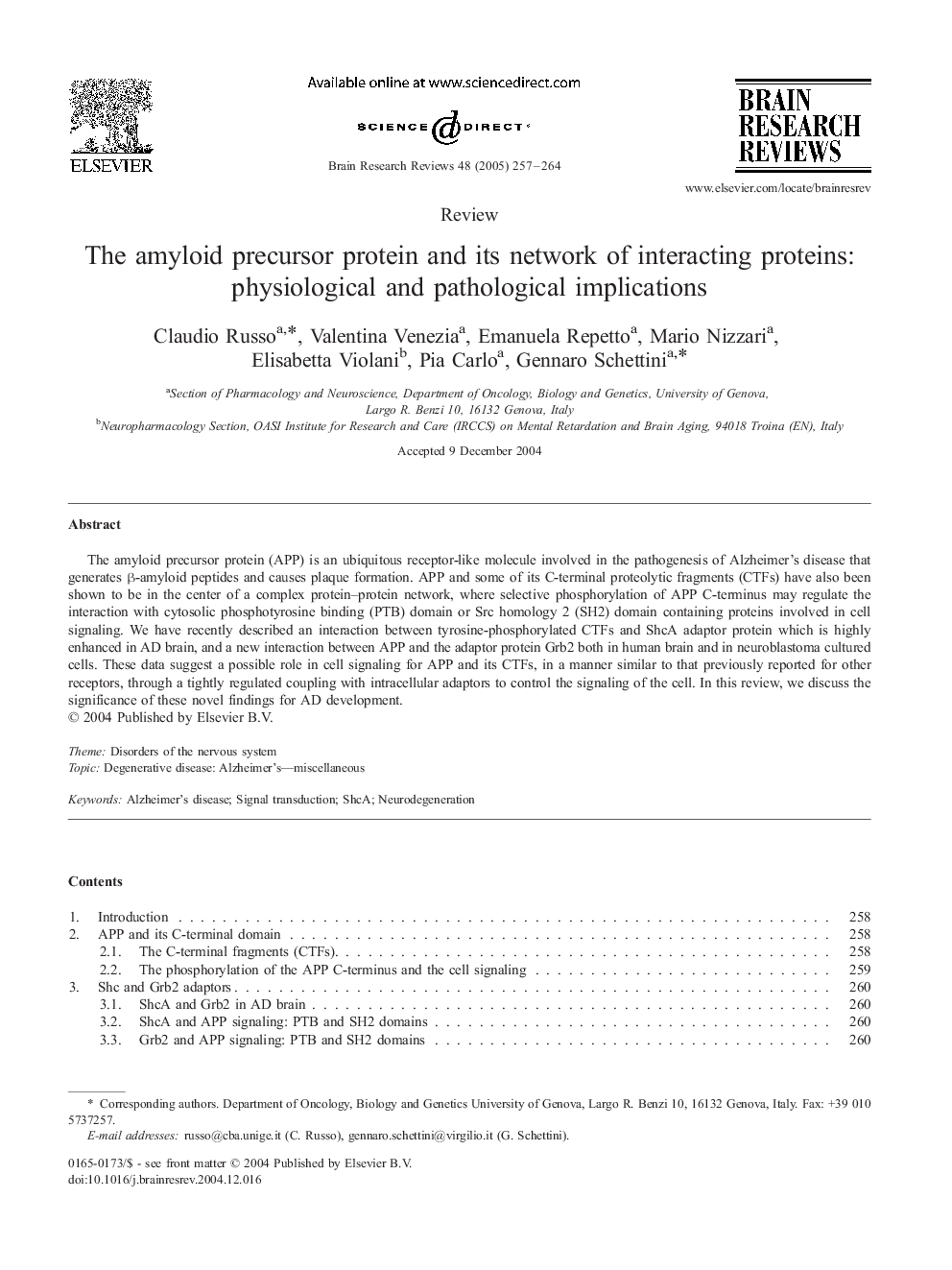| Article ID | Journal | Published Year | Pages | File Type |
|---|---|---|---|---|
| 9423162 | Brain Research Reviews | 2005 | 8 Pages |
Abstract
The amyloid precursor protein (APP) is an ubiquitous receptor-like molecule involved in the pathogenesis of Alzheimer's disease that generates β-amyloid peptides and causes plaque formation. APP and some of its C-terminal proteolytic fragments (CTFs) have also been shown to be in the center of a complex protein-protein network, where selective phosphorylation of APP C-terminus may regulate the interaction with cytosolic phosphotyrosine binding (PTB) domain or Src homology 2 (SH2) domain containing proteins involved in cell signaling. We have recently described an interaction between tyrosine-phosphorylated CTFs and ShcA adaptor protein which is highly enhanced in AD brain, and a new interaction between APP and the adaptor protein Grb2 both in human brain and in neuroblastoma cultured cells. These data suggest a possible role in cell signaling for APP and its CTFs, in a manner similar to that previously reported for other receptors, through a tightly regulated coupling with intracellular adaptors to control the signaling of the cell. In this review, we discuss the significance of these novel findings for AD development.
Keywords
Related Topics
Life Sciences
Neuroscience
Neuroscience (General)
Authors
Claudio Russo, Valentina Venezia, Emanuela Repetto, Mario Nizzari, Elisabetta Violani, Pia Carlo, Gennaro Schettini,
